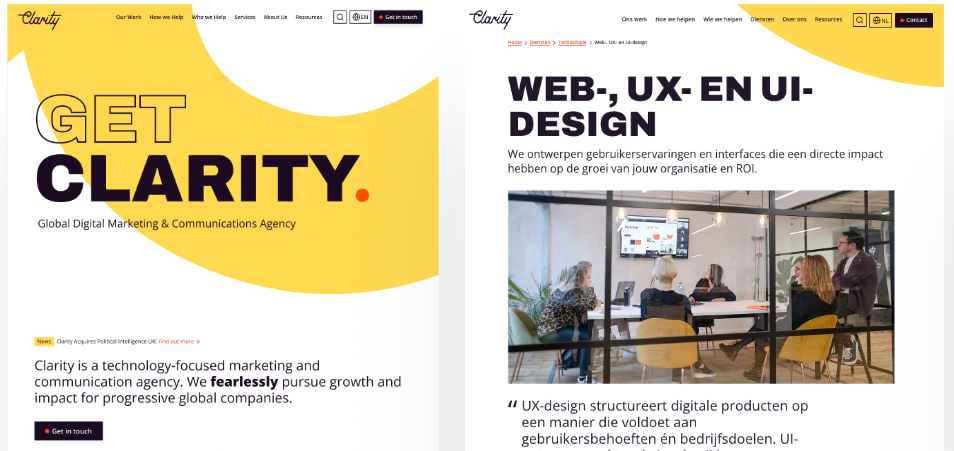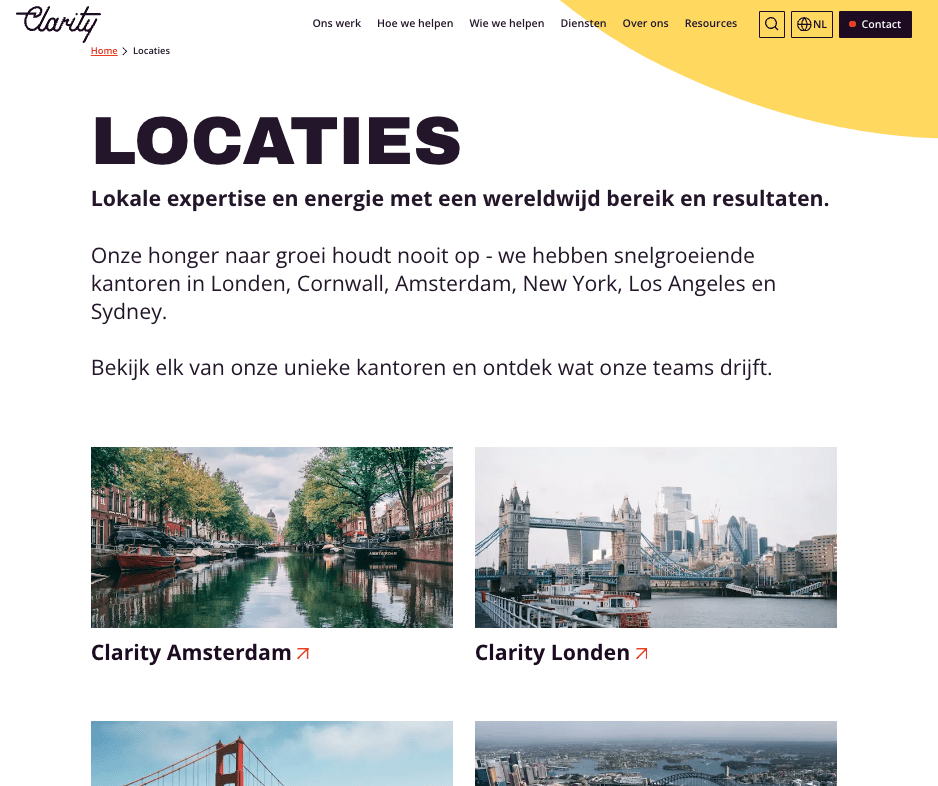The potential of WordPress as a Headless CMS

Headless websites are on the rise for a number of reasons – speed and overall experience being just a couple.
By de-coupling the backend “body” of a CMS from the visual frontend “head“, it provides developers with the flexibility to innovate, allows for emerging user experiences, and helps future-proof builds by allowing developers to refresh the design without re-implementing the entire CMS.
WordPress has evolved from its early days as a blogging platform to a flexible CMS that now powers over 40% of websites on the internet. While it continues to be a go-to choice for content management, the headless trend is reshaping how WordPress is used in the development community.
In this blog post, I will share a few of the features I used leveraging WordPress as a headless CMS in the development of our sister agency’s website, Clarity.
What is a Headless CMS?
CMS platforms like WordPress used to be monolithic systems where the back end (where the content is created and stored) was tightly linked with the front end (what the users see). A headless CMS, however, decouples the backend ‘body’ from the frontend ‘head’, serving content through an API for display on devices. This architecture provides a lot more flexibility and is especially suited for projects targeting multiple platforms or requiring a custom user experience.
Key Features using WordPress as a Headless CMS
Traditionally, WordPress was a static CMS, with aspects such as design fused in via a templated theme. However, with the need for more flexibility, many developers (including me!) have begun decoupling the CMS, using it for content management, editorial, and administrative tools, while implementing a separate frontend component that communicates with the CMS via an API.
Gutenberg Editor
The Gutenberg editor revolutionizes content creation in WordPress, providing a block-based interface that simplifies the construction of complex page layouts. When used in a headless context, Gutenberg allows content creators to maintain a high degree of control over the structure and presentation of content without interfering with the front-end design, ensuring a seamless integration with any framework developers choose.
Next.js & Faust.js Integration
The frameworks Next.js & Faust.js were pivotal to the Clarity build.
Next.js is the go-to technology for our frontend builds while Faust provides a useful bridging link for headless WordPress CMS integration. Faust, is a framework (developed by WPEngine) specifically designed for building headless WordPress applications. It provides a set of tools and features optimized for the React ecosystem, enabling developers to fetch, cache, and display content from WordPress in a headless setup. This bridges the gap between WordPress’s rich content capabilities and the performance and scalability benefits of a modern JavaScript framework.
GraphQL Support
Leveraging GraphQL with WordPress in a headless architecture allows for more efficient data retrieval. By sending a single request to get exactly the data required, websites and applications can load faster, enhancing the user experience. This is particularly beneficial in scenarios where mobile performance and bandwidth usage are critical considerations.
WPML for Multilingual Projects
WordPress as a headless CMS doesn’t lose its ability to handle multilingual content when paired with WPML (WordPress Multilingual Plugin). This feature is crucial for global projects (like Clarity) targeting audiences in multiple languages, ensuring content is accessible and relevant to users worldwide.

DeepL Translation Integration
For projects that require automated translation, integrating DeepL with WordPress can significantly streamline the localization process. DeepL’s advanced AI-driven translation services offer high-quality, context-aware translations, making it easier to maintain multilingual websites.
HubSpot Integration
Integrating WordPress with HubSpot helps businesses leverage their content to drive marketing and sales activities. In a headless CMS setup, this allows for seamless data flow between the website and HubSpot, enabling more personalized content marketing strategies and lead management processes.
Yoast SEO Plugin
SEO remains a cornerstone of digital presence, and Yoast SEO, the most popular WordPress plugin for on-page SEO, is fully compatible with headless WordPress setups. It provides content managers with the tools needed to optimize content for search engines, ensuring visibility in a competitive online space.
Advanced Custom Fields (ACF)
ACF extends WordPress’s content management capabilities, allowing for the addition of custom fields to posts, users, and more. In a headless context, ACF ensures that developers can deliver a rich, bespoke content structure while offering content creators a straightforward interface to input data.
Conclusion
Adopting WordPress as a headless CMS represents a shift in how we think about content management and delivery. By decoupling the backend from the frontend, developers like me gain the flexibility to build innovative, cross-platform experiences without losing the flexible content management capabilities that WordPress provides.
Through enhanced editing experiences, efficient data handling with GraphQL, Next.js + Faust.js integration and advanced customization options, the potential of a headless WordPress setup is promising. It’s been both fun and a challenge to work on Clarity’s headless WordPress website but we’re chuffed to bits with the outcome.
Let us know if you’d like to hear more about this project.
Let’s Talk
Do you have a web design and build project coming up that you would like to talk about?

Applying the Pareto Principle to website redesign & builds

Internal Day: April 2024
Let's Talk
Do you have a web design and build project coming up that you would like to talk about?